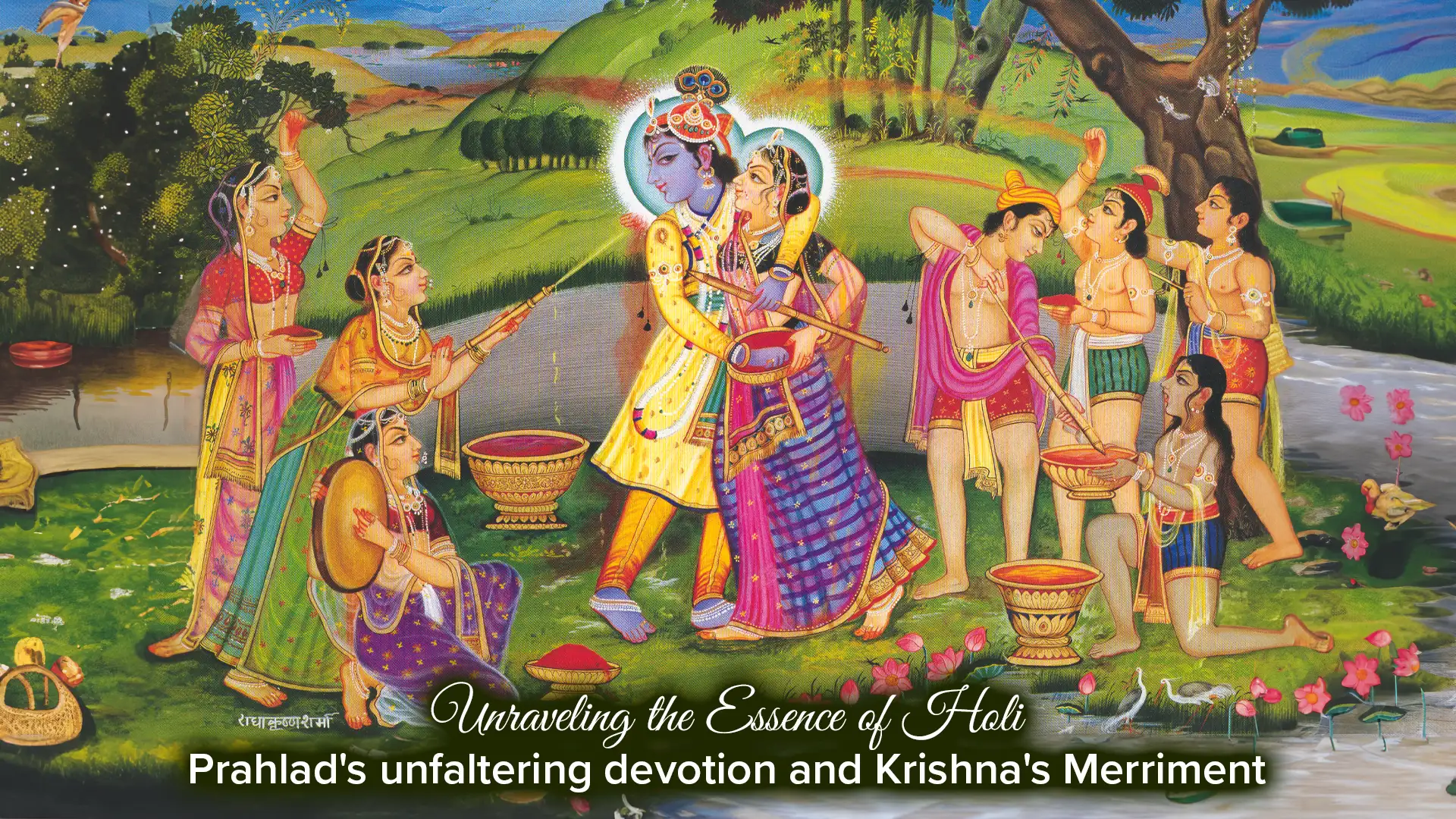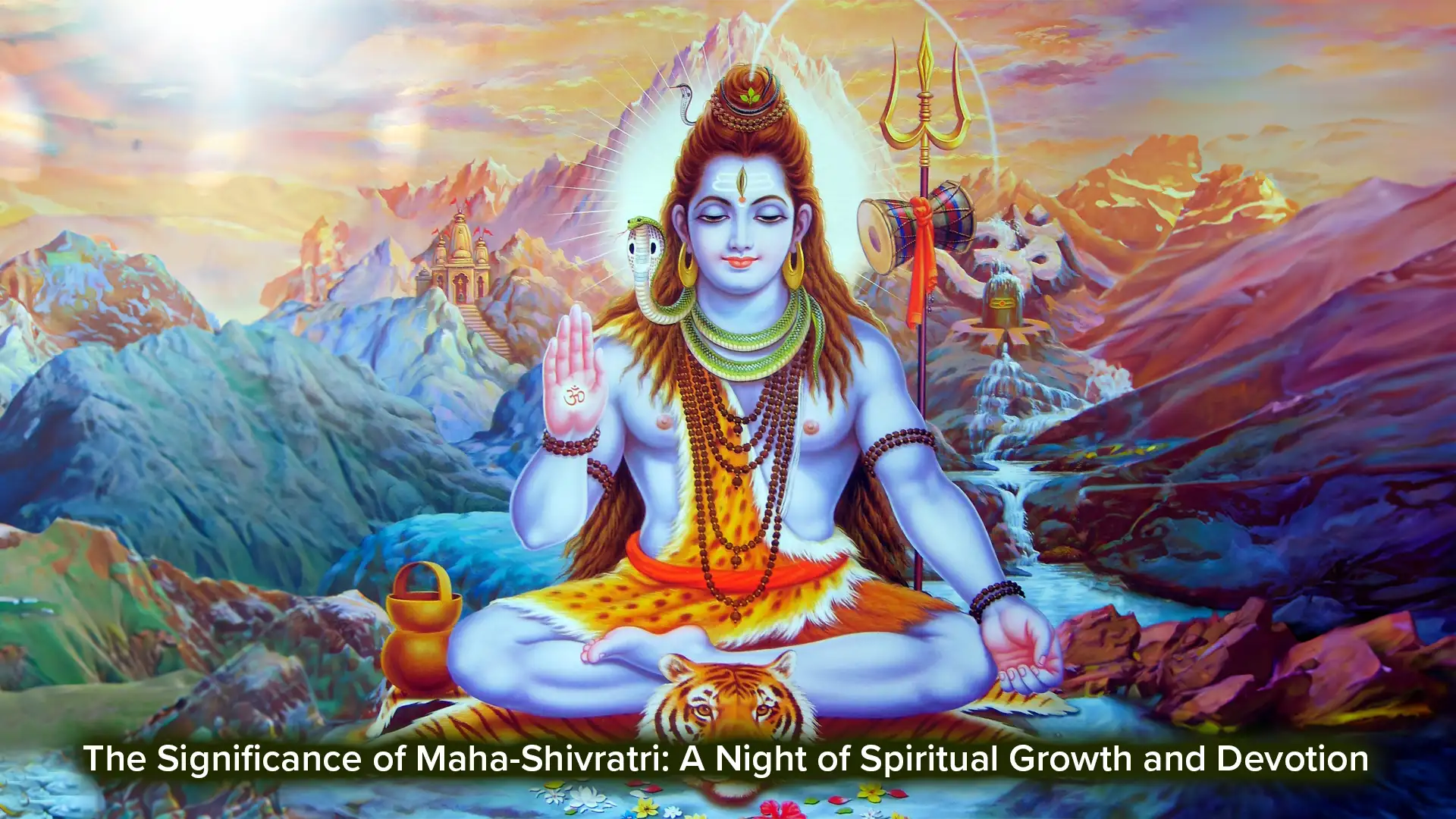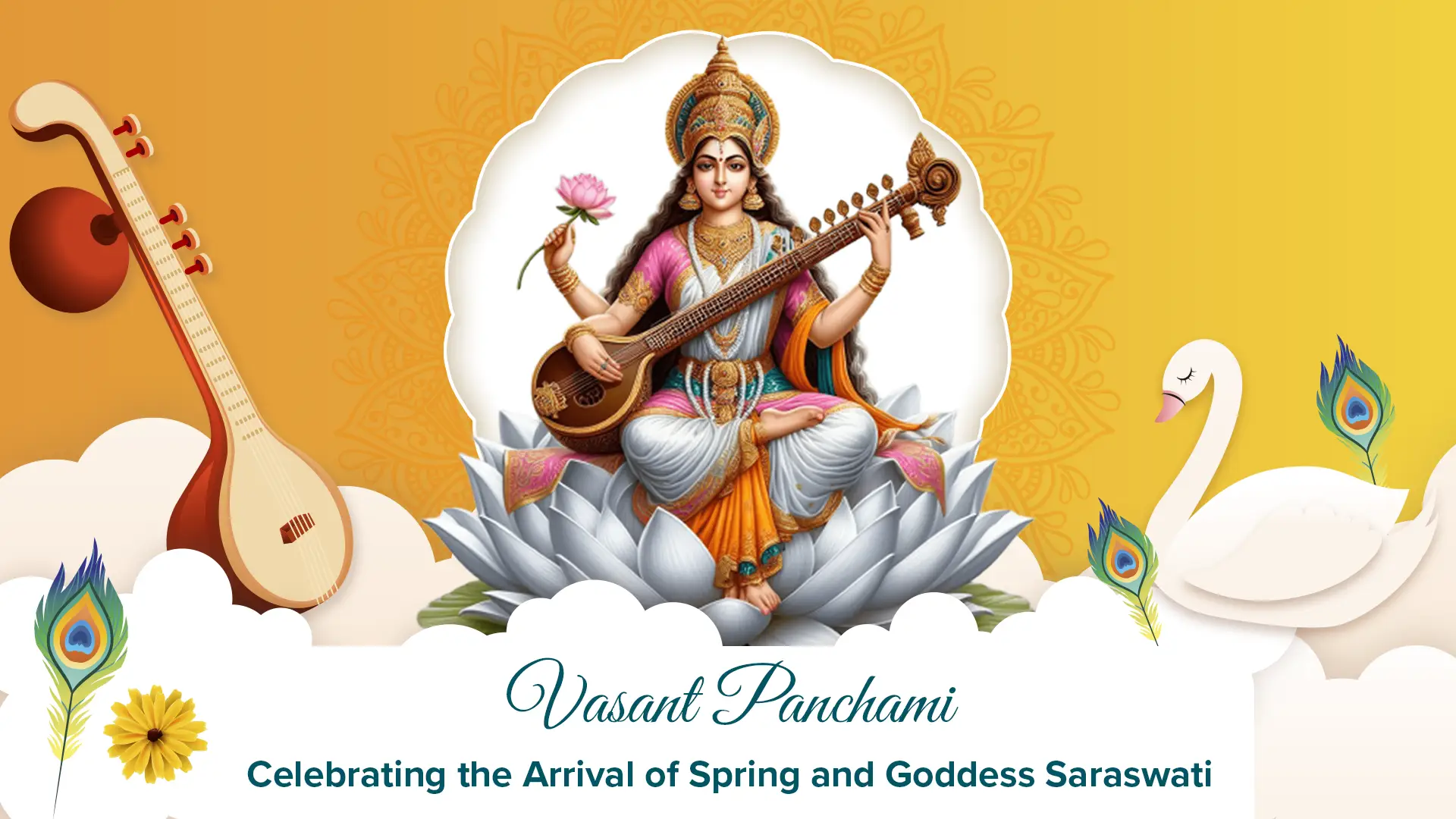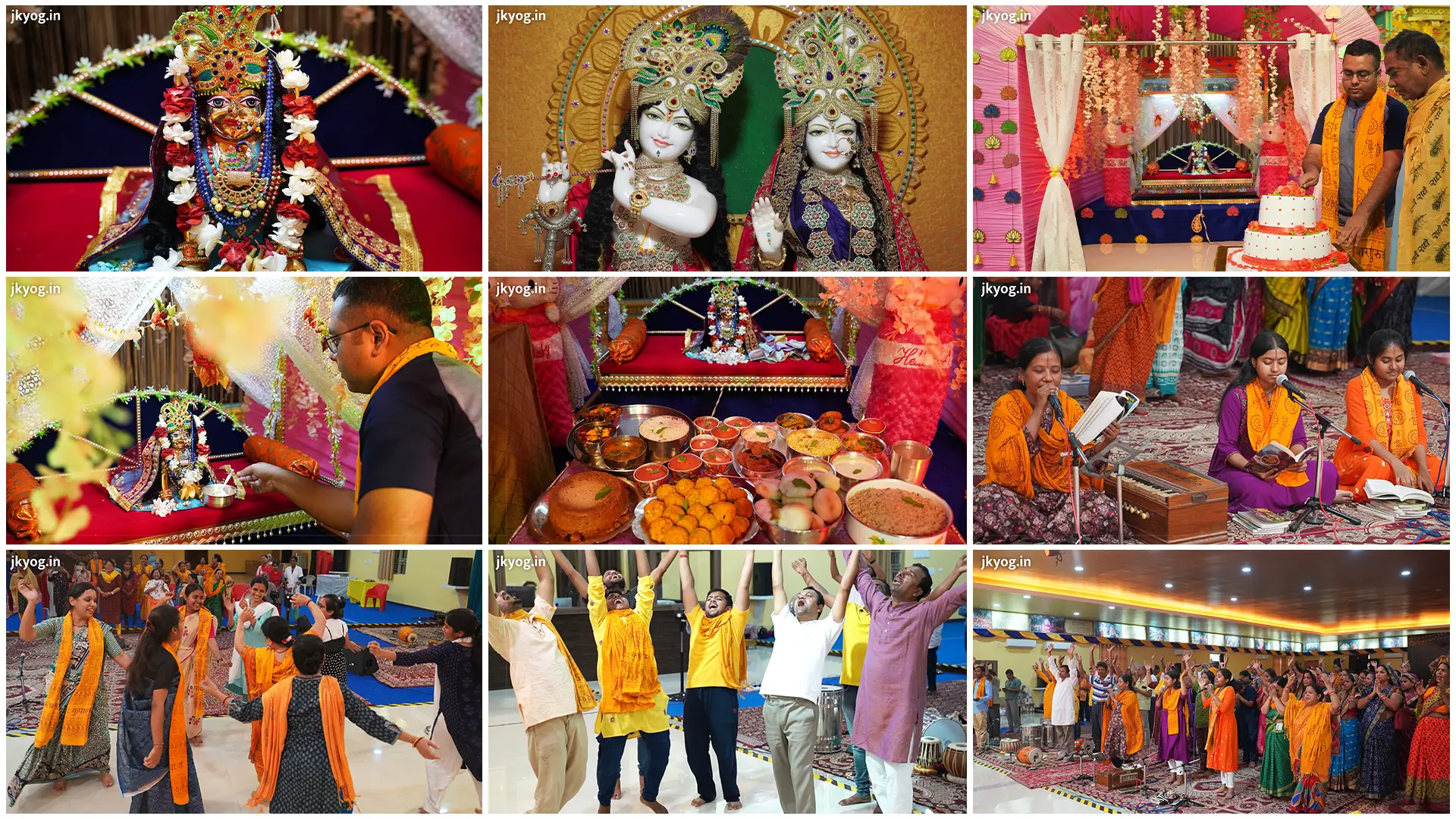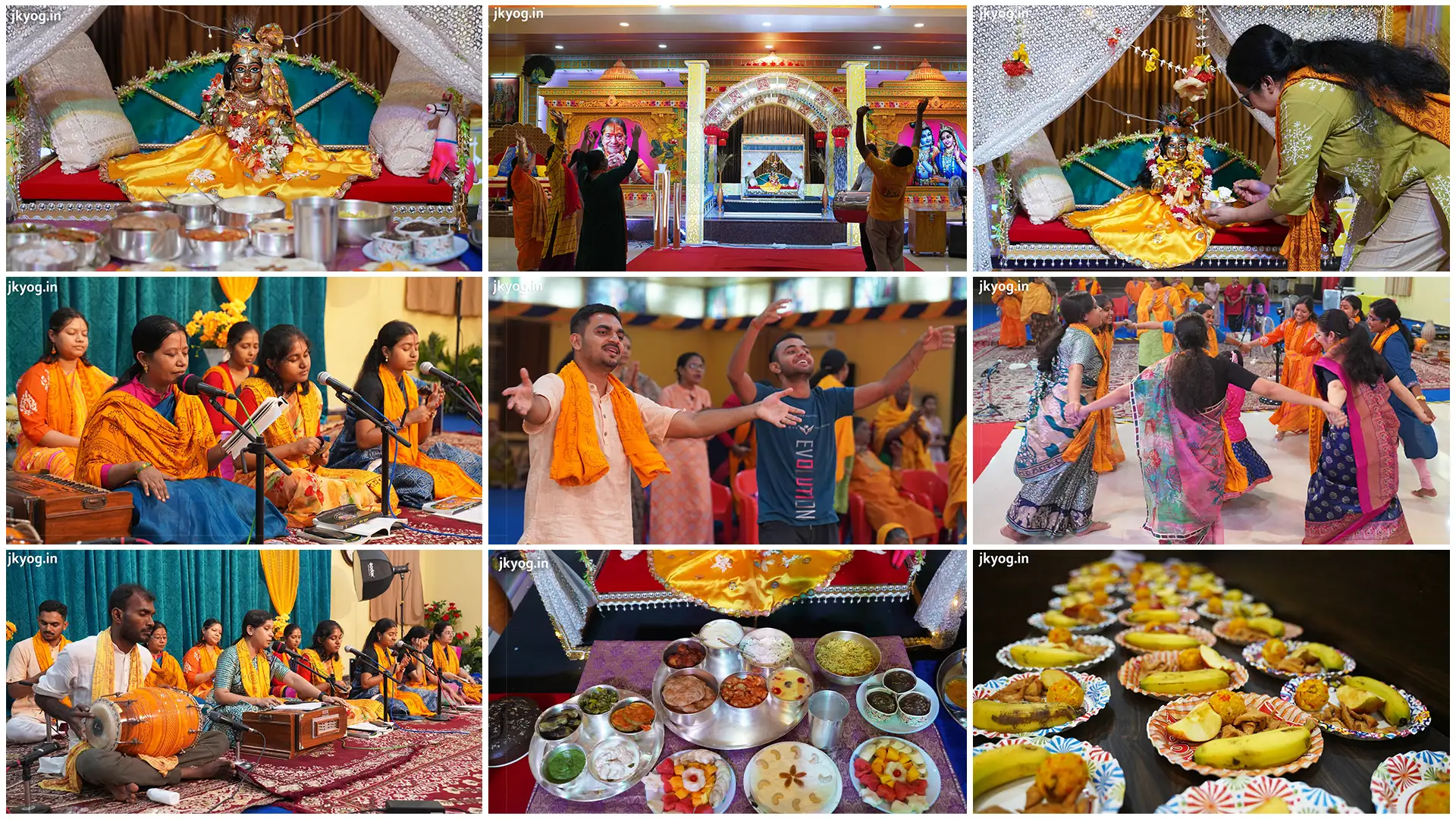As the chilly winter breeze gradually fades away, spring's vibrant and lively colours begin to decorate the world, and India gears up for one of its most colourful and festive celebrations - Holi. Known as the festival of colours, Holi brings people from different walks of life together in a grand display of colours, joy, and togetherness. Over time, Holi has evolved into a cultural extravaganza that is not only celebrated in India but also numerous global locations, uniting people across the world. Behind the bursts of colours, Holi holds a significant spiritual meaning, representing rejuvenation, purification, and the triumph of good over evil. Let's explore the true essence of Holi and its profound significance, which touches the hearts of millions.
The Legend of Prahlad
Holi, a vibrant celebration of colours, not only heralds the onset of spring but also serves as a poignant reminder of the omnipresence of God, or sarvavyāpī (सर्वव्यापी) in Sanskrit/Hindi. Central to this festivity is the enthralling narrative of Prahlad, a devout devotee whose steadfast belief continues to inspire countless generations.
The story begins with the birth of the daitya (demon) brothers, Hiranyaksha and Hiranyakashipu, whom the
Four Kumaras
cursed to endure three lifetimes as demons. Following Hiranyaksha's demise at the hands of Lord Vishnu's Varaha avatar, Hiranyakashipu, consumed by grief and vengeance, undertakes intense penance to avenge his brother's death.
Four Kumaras
cursed to endure three lifetimes as demons. Following Hiranyaksha's demise at the hands of Lord Vishnu's Varaha avatar, Hiranyakashipu, consumed by grief and vengeance, undertakes intense penance to avenge his brother's death.
Alarmed by Hiranyakashipu's devotion, Indra abducts his pregnant wife, Queen Kayadhu. However, Sage Narad intervenes, recognising the divine presence within Kayadhu's womb. Narad imparts profound spiritual wisdom to the pregnant Kayadhu and her unborn child, Prahlad, who absorbs the teachings with innate reverence. As a result, Prahlad is born a devout devotee of Lord Vishnu.
Prahlad's steadfast devotion to Lord Vishnu provokes his father's wrath as he grows. Despite relentless attempts on his life, Prahlad remains unscathed, a testament to his unwavering faith and divine protection. Even Holika's treacherous attempt to burn him alive fails, symbolising the triumph of virtue over vice.
When nothing seems to work, in a final act of defiance, Hiranyakashipu confronts Prahlad, demanding to know his Lord's whereabouts. Prahlad's unwavering response invokes the wrath of Lord Narasimha, a divine incarnation embodying a man's torso with a lion's visage.
From the palace pillar emerges Narasimha (Narasiṃha/नरसिंह ), whose formidable presence vanquishes Hiranyakashipu, delivers justice, and vindicates Prahlad's faith. The tale of Prahlad transcends time and establishes that God is present everywhere.
Krishna's playful adventures and vibrant Holi festivities
In his youth, Krishna was renowned for his mischievous nature, especially his penchant for pranking the Gopis of Vrindavan. One well-known tale recounts Krishna's playful gesture of applying colours to Radha's fair complexion, contrasting with his dark skin. This act symbolised unity and love, embodying the essence of the Holi festival.
Throughout his life, Krishna epitomised joy, love, and companionship. His divine leelas, or playful deeds, are immortalised in scriptures and folklore, inspiring devotees to follow his teachings. During his time in Vrindavan and Mathura, Krishna engaged in delightful pastimes with his companions, often involving the playful scattering of coloured powders and water.
The Rasik saints of Braja have captured the essence of Holi and the playful hues of Lord Krishna in their timeless literature. Through their writings, they paint a vivid picture of the transformative journey within the devotee's soul during the festival of Holi, when Lord Krishna adorns his beloved Gopis with colours, symbolising divine love.
A verse below from Jagadguru Shree Kripaluji Maharaj is a perfect example of saints using their literature to bring out the transformation of a soul.
लाल सँग, खेलिय हिल मिल फाग। चलु री सखी!
lāl saṅg, kheliy hil mil phāg. chalu rī sakhī!
O Sakhi! Play Holi with Shyamasundara with the sentiment of love.
The opening sentence sets its tone and expresses excitement for the festivities. It calls for participation in the colourful revelry of the Holi festival, evoking feelings of joy and vitality.
चलु री सखी! भव-निशा सिरानी, भई भोर गइ जाग।
chalu rī sakhī! bhav-niśā sirānī, bhai bhor gaī jāg
The night of worldly existence is fading, and dawn is breaking.
The line symbolises a shift from darkness to light, reflecting a spiritual awakening or enlightenment. It urges the soul to awaken as the night of material existence ends and the dawn of true knowledge arrives.
केशर घोर भाव की गोरी! पिचकारी अनुराग।
keśar ghora bhāv kī gorī! pichkārī anurāg
Mix the saffron colour of your devotional sentiments, and using the pichakārī of attachment for Him, play Holi with Him.
In this line, the poet is symbolically asking a soul to fill the pichkari (water gun) made of affection with the colour made of divine sentiment (bhāv). By filling the water gun with the colour of their bhāv, devotees are metaphorically preparing to engage in the joyous celebration of love and devotion, symbolised by the playful splashing of colours during Holi.
पानि तानि मारिय दृग-बानन, सहज पिया-रस-पाग।
pānī tānī māriya dr̥g-bānan, sahaj piyā-ras-pāg
Shower Him with the arrows of flirtatious glances, effortlessly immersing yourself in the bliss of love for your Beloved.
The poet compares splashing water during Holi to the flirtatious glances (nayan bān/ नयन बान) of love directed towards the beloved. Both actions symbolise expressions of intense love. The phrase "sahaj piyā-ras-pāg" highlights the natural flow of love resulting from genuine expressions of affection.
रति-रस-रंग-सरबोरी गोरी, लखु अपुनो बड़भाग।
rati-ras-raṅg-sarborī gorī, lakhū apuno baṛabhāg
Immersed in the colour of amorous love, look upon your great fortune.
Immersed in Shree Krishna's divine love, the soul gleefully reflects upon its own good fortune. Saturated with the delightful essence of divine love, it radiates with illumination. This realisation prompts a sense of gratitude and contentment. The soul recognises its immense blessings in experiencing the ecstasy of divine love.
इमि 'कृपालु' करि उर-पट-बंदी, करु निज अमर सुहाग।।
Imi 'Kripālu' kari ur-paṭ-bandī, karu nija amar suhāg
Enclosing Him in your heart, make your married life eternal, with an immortal groom.
In the final line, 'Kripalu' suggests that since Shree Krishna is the true spouse of the soul, one should embrace divine matrimony. Let your heart be His sanctuary and bask in the eternal bliss of being forever "suhāgan". When you accept Shree Krishna as your beloved, you, too, are adorned with the blissful status of "suhāgan" forever.
Holi: A Spiritual Journey of Self-Realization and Joyful Revelry
Holi is much more than just a festival of colours; it is a journey of the soul, a pilgrimage towards self-realisation and spiritual awakening. As we immerse ourselves in the festivities of Holi, it is essential to understand its spiritual significance. The colours used during Holi are not just a representation of joy and celebration; they also symbolise the various emotions and feelings that we experience in our lives.
Therefore, let us not only revel in the external joy of the festival but also cultivate an inner sense of peace, harmony, and spiritual abundance. Let us use this opportunity to connect with our inner selves and align our thoughts and actions with our spiritual values.
May this festival ignite the flames of divine love within our hearts and illuminate the path towards higher consciousness and enlightenment. Let us celebrate Holi with the spirit of love, compassion and forgiveness and spread joy and happiness. Happy Holi!

